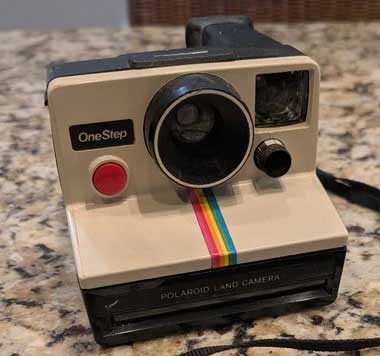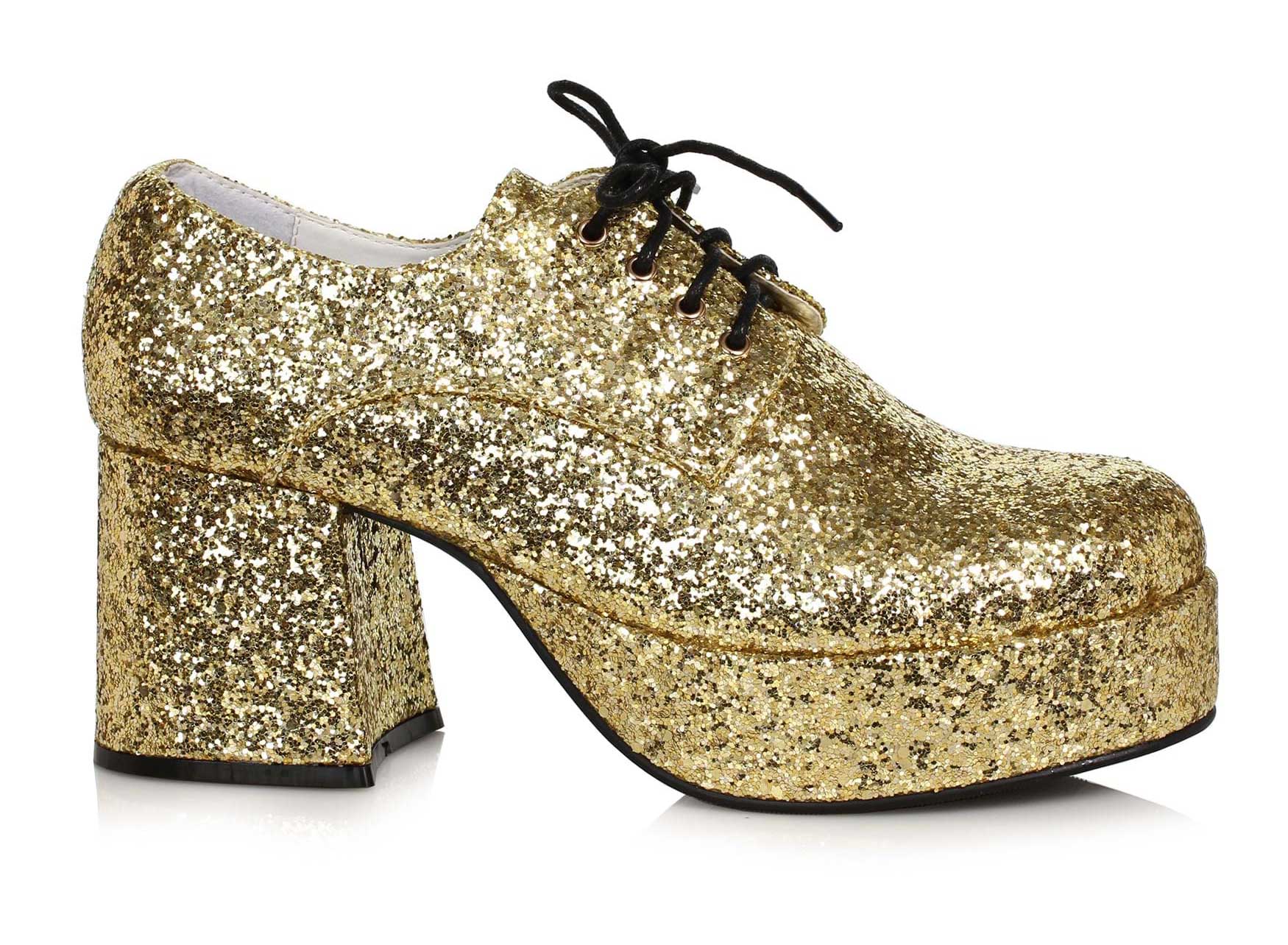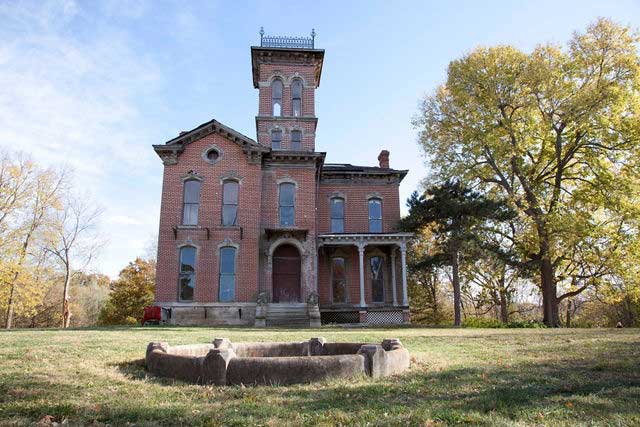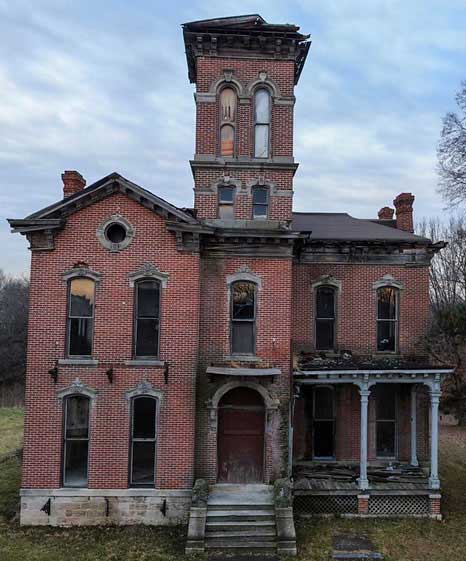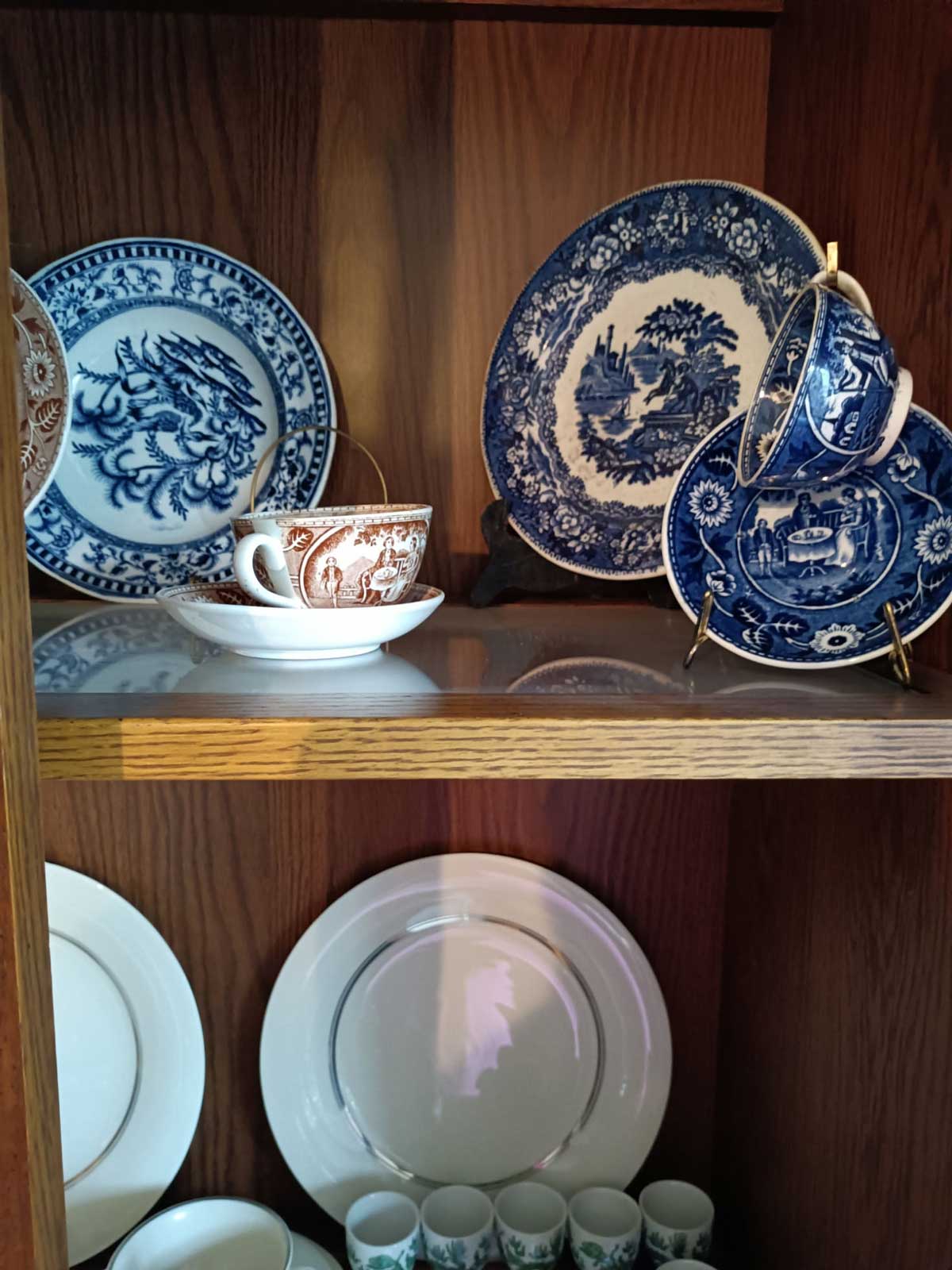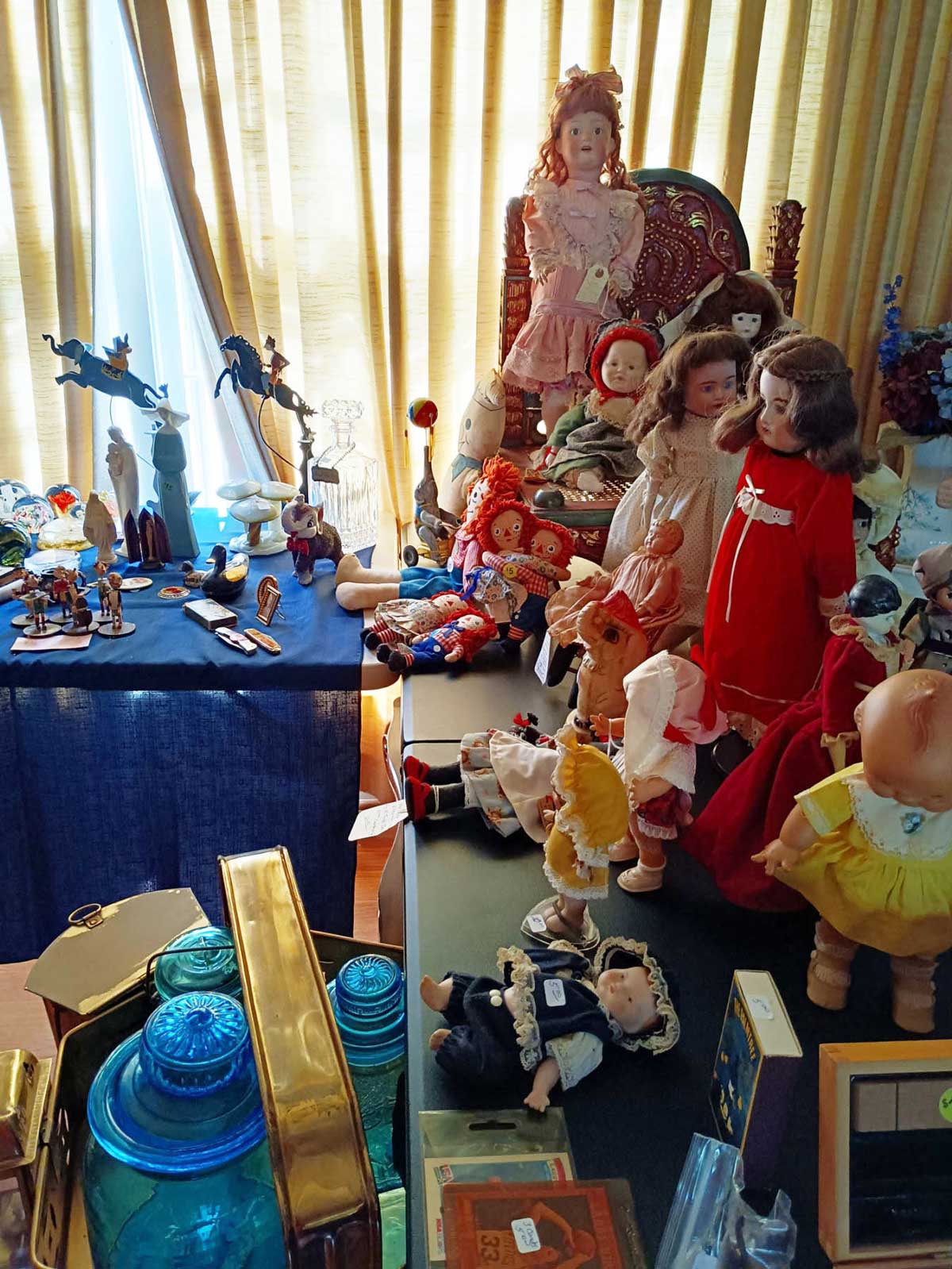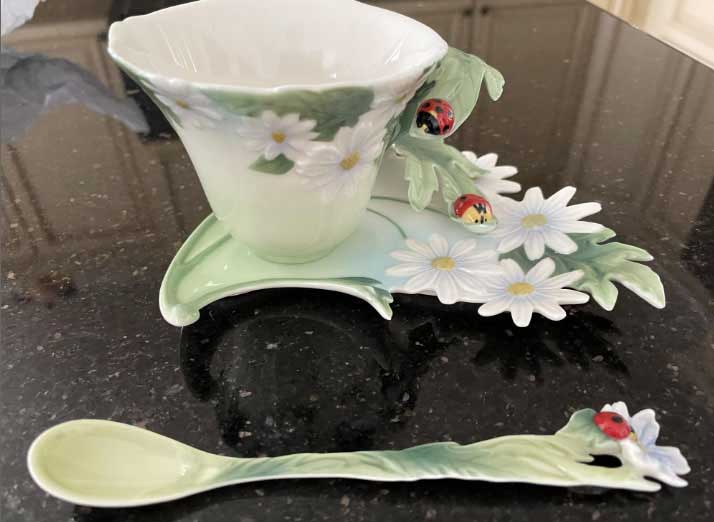Winter time vintage cookbook fun
February 2025
Michelle Knows Antiques
Winter time vintage cookbook fun
by Michelle Staley
I get numerous inquiries about vintage cookbooks and I thought that this month I would share some cookbook information with you. I had two aunts who would get their mother’s recipe box out in January and peruse them to rediscover meals their mama cooked when they were young. My paternal grandmother did not have many written recipes, she had to cook for nine and I’m certain that her meals were based on what was ready in the garden and meat she had stored away. One of my aunts told me they ate a substantial amount of venison. I enjoyed going through the recipes to see my grandmother’s beautiful handwriting on old envelopes, recipes from magazines and newspaper, and those shared by friends.
Cookbooks take on many forms you have those that were given to the purchaser of a new appliance, cookbooks crafted by food companies, those put together by clubs, and my personal favorite old home economics or how to be a good hostess/wife books.
I still have my 1959 Imperial Sugar “My First Cookbook” I learned to make deviled eggs using the recipe and I still make the apple crisp recipe. The value on this little 36 page, card stock covered cookbook is around $10 if it’s in excellent condition which mine is not. Lea and Perrins, the makers of Worcestershire sauce, put out a cookbook titled “ Dishes Men Like” dated 1952. It is filled with a variety of heavy meaty meals. I love the cover art it shows various meals in specialty serving dishes. A crab dish is in a crab shaped serving bowl, I would love to find that bowl in a sale. Surprisingly it has a resale value in the $10 to $15 range, I imagine that the price is based more on the art than the recipes. One of the vintage cookbooks I have referred to several times is a paperback 1942 “Betty Crocker All Purpose Baking.” If you have a desire to learn to bake a loaf of break, nice flaky pastries, or the perfect pie crust this is a must have. I have yet to master any of those skills and it’s not for a lack of trying. This is one of the cookbooks I pull out every winter and keep plugging away at mastering anything edible. I have learned that when baking you must follow the directions in the recipe if you desire perfection. The paperback cover has come un-stapled on the one I own but if you have one in good condition it will sell in the $20 range. I certainly did not expect it to be worth that much considering the number of Betty Crocker cookbooks on the market. It is quite possible that this particular version is a first edition.
“In a cookbook from the groom’s mother – My darling, here’s a little book that tells you how to bake the cakes, and pies, and other good things his “mother used to make.” For men are hungry creatures, dear, but this we know about them, that cooking would not be such fun if we had to eat without them. So take this book with my fondest love, and a thought I will impart; when you feed a husband, keep in mind his stomach’s near his heart!” The Farm Journal…. published in Don McNeill’s Favorite Poems, 1951.
Some of the appliance manufacturer cookbooks in my winter rotation; “Mary Meade’s Magic Recipes for the Electric Blender” by Ruth Ellen Church, hardback with dust jacket, 1965, 372 pages. If you are in need of cocktail recipes this cookbook has an abundance of them along with soups. I have made a few of the salad dressing recipes with Avocado Dressing being my favorite. It has some good sounding recipes in it but on many, using the blender is just overkill plus something else you have to wash. I will say that it has quite a few healthy recipes in it. In excellent condition it sells for around $8. If the dust jacket is missing this lowers the price. Several stove companies gave cookbooks to those who purchased a stove. The American Stove Co. produced several brands of appliances and I have a 1926 cookbook for the Lorain stove and a 1935 cookbook for a Magic Chef stove. Both have the same recipes in them. They are all pretty basic recipes and nothing has jumped out at me as something I must cook. The price point on these is relatively low because they are both later printings. If you had a first edition, especially of the Lorain, it would sell around $20 if not a bit more. Another stove company cookbook is from Harper Compact, it is more of a pamphlet style cookbook. It has the basic recipes you find in most cookbooks in the early 1950s but one year I found a dessert that the whole family loved especially my father so I cook it several times a year.

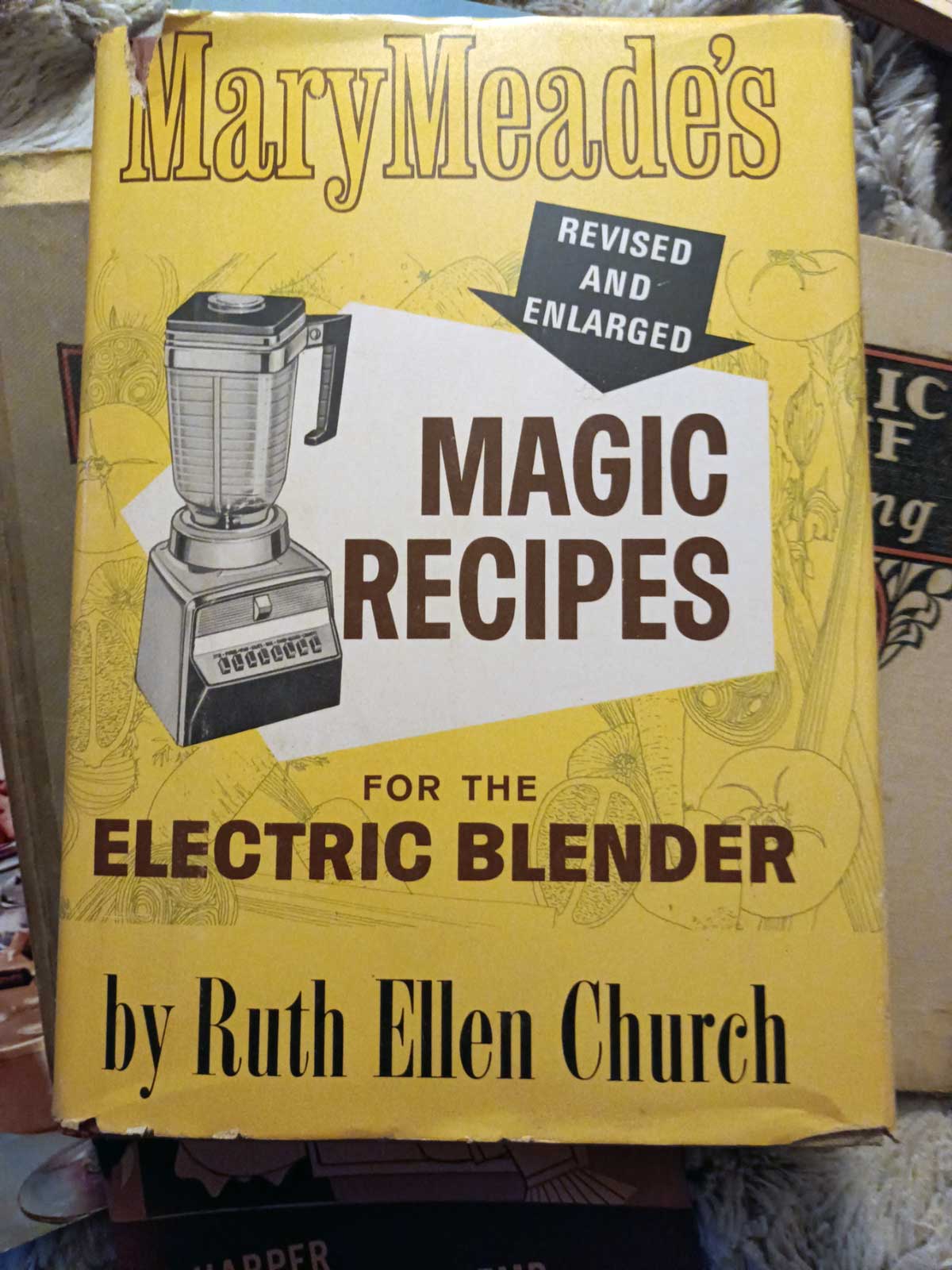
Vintage blender cookbook.
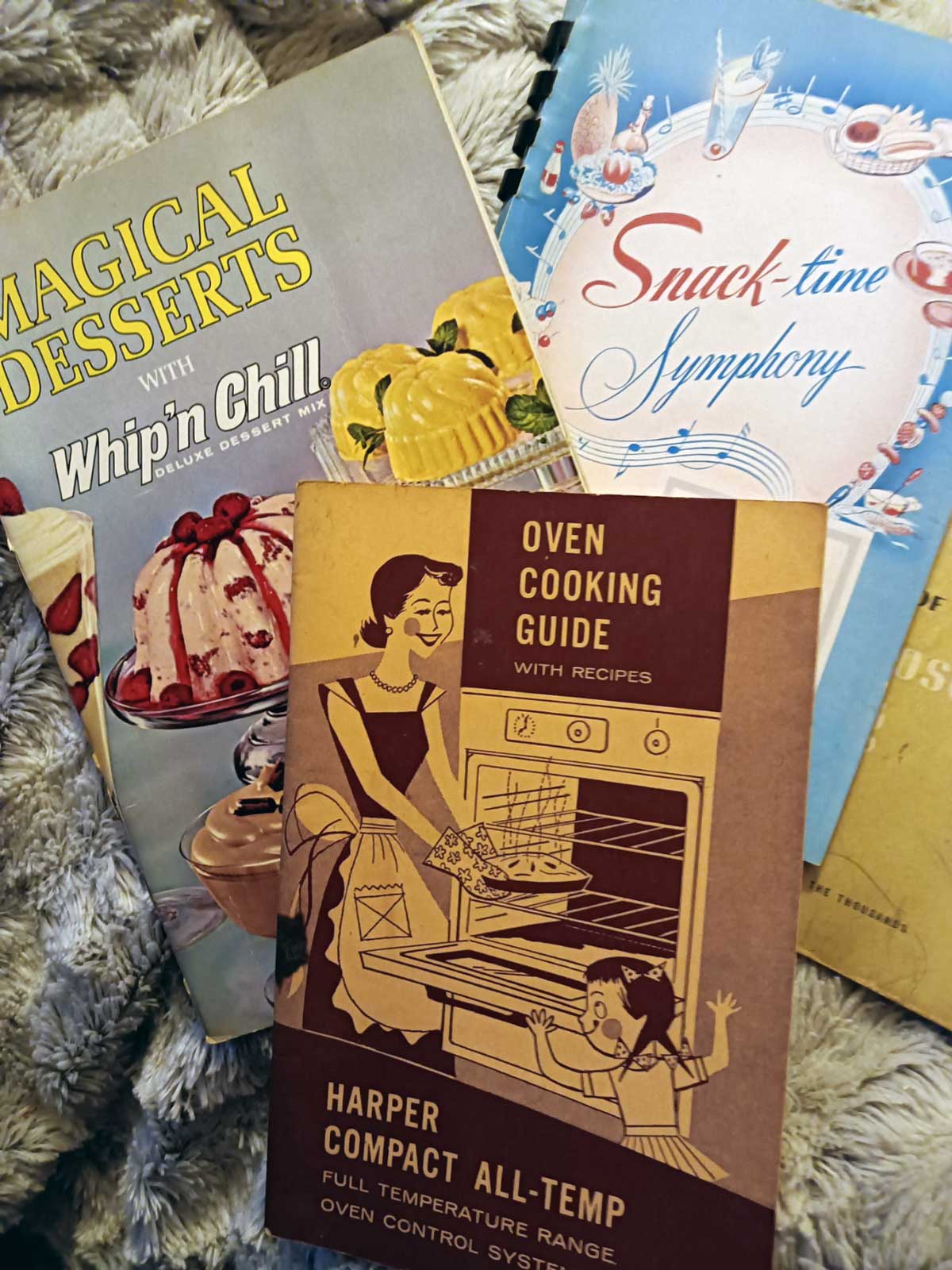
A sampling of my vintage cookbooks. (Images courtesy of the author)
One of my favorite “local club” cookbooks in a 1956, spiral bound titled “Snack-Time Symphony” put together by the Milford Extension Club of Milford, Missouri. I haven’t sat down to peruse the recipes but the names of the dishes are a hoot they all have to do with music, plays, and movies. “Hear You Knockin’ Russian Dressing,” “Return Engagement Honey Salad” and so on. Generally this type of cookbook has only local appeal but with the catchy names and colorful cover it will sell for about $15.
Are there any cookbooks that are valuable? Yes, there are a few. Julia Child, autographed, first edition of “Mastering the Art of French Cooking” sells for $5,000 in near mint condition and if you have the 1970 sequel the pair sell for around $9,000. The unsigned first edition will still bring you $200. A 1907 edition of Auguste Escoffier’s “A Guide to Modern Cookery” can sell for $2,500, a signed copy of Salvador Dali’s “Les Diners de Gala” $4,400, and a 1931 edition of Irma Rombauer’s “The Joy of Cooking” can bring you $15,000. Irma Rombauer self-published a collection of her recipes to support her family after her husband died. Originally she could only afford to have 3,000 books printed and I can’t find what the original sale price was. This cookbook is the most popular cookbook ever printed and to date over 20 million have been printed. Julia Child learned to cook from this very book.
I could write multiple pages about all of the cookbooks, pamphlets, Kitchen-Klatter magazines, and recipe card files I have stashed in a kitchen cabinet. I love these wonderful treats and really do get a dozen out every January to enjoy and heat up the house by cooking something new and different. I have learned to avoid anything that begins with three boxes of gelatin, I don’t like a good cut of meat surrounded by anything that wiggles. Acquiring them is a very inexpensive hobby, you get a little glimmer into popular food of the time, and never disregard the margin notations.
Happy cooking, or at least reading.

My first cookbook, literally.
*All prices given are for sale in a private sale, antique shop, or other resale outlets. Price is also dependent upon the geographic area in which you are selling. Auction value, selling to a dealer or pawn shop prices are about ½ or less of resale value.
Michelle Staley is a Lenexa, KS-based dealer and researcher with 35 years of experience in the antique trade.
Send questions with photos to Michelle at michelle@discovervintage.com or TXSmichelle@gmail.com. Please keep queries to one question; questions without photos of the item may not be answered. There is no guarantee that your question will be answered or published.
Michelle is also available for consulting and extensive research work beyond this column. If you would like an appraisal on an antique or collectible please go to www.michellesantiqueappraisals.com for a one-on-one appraisal. Please note new web address.


